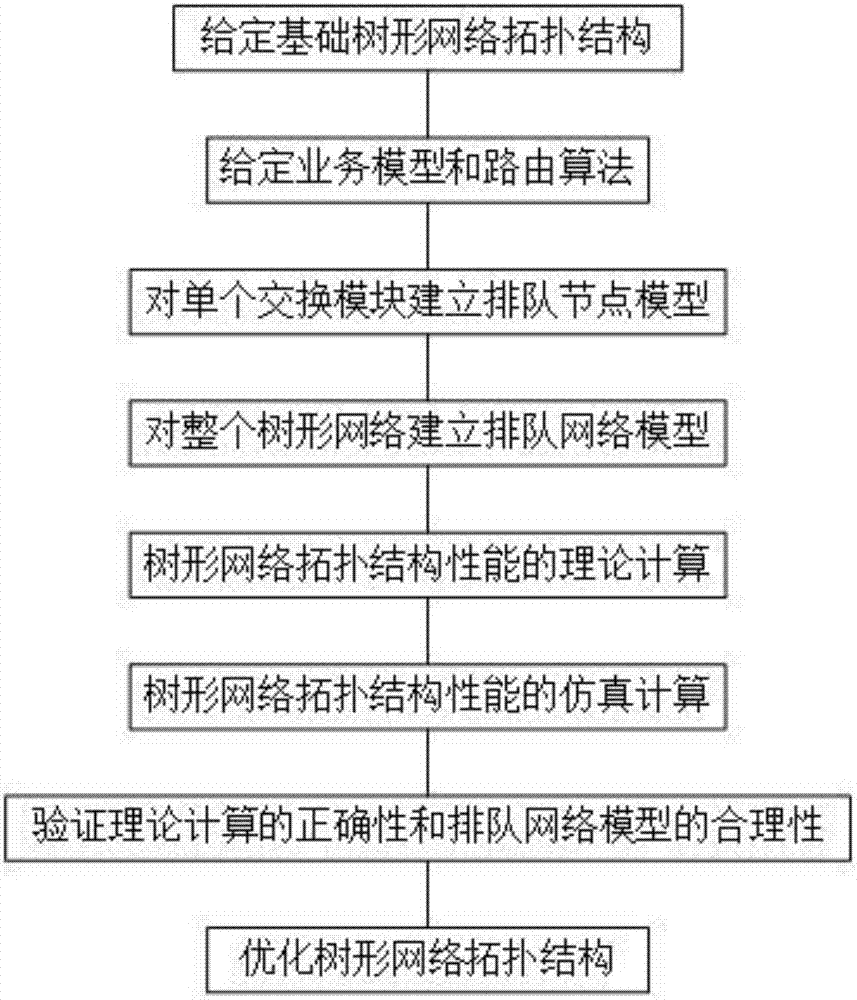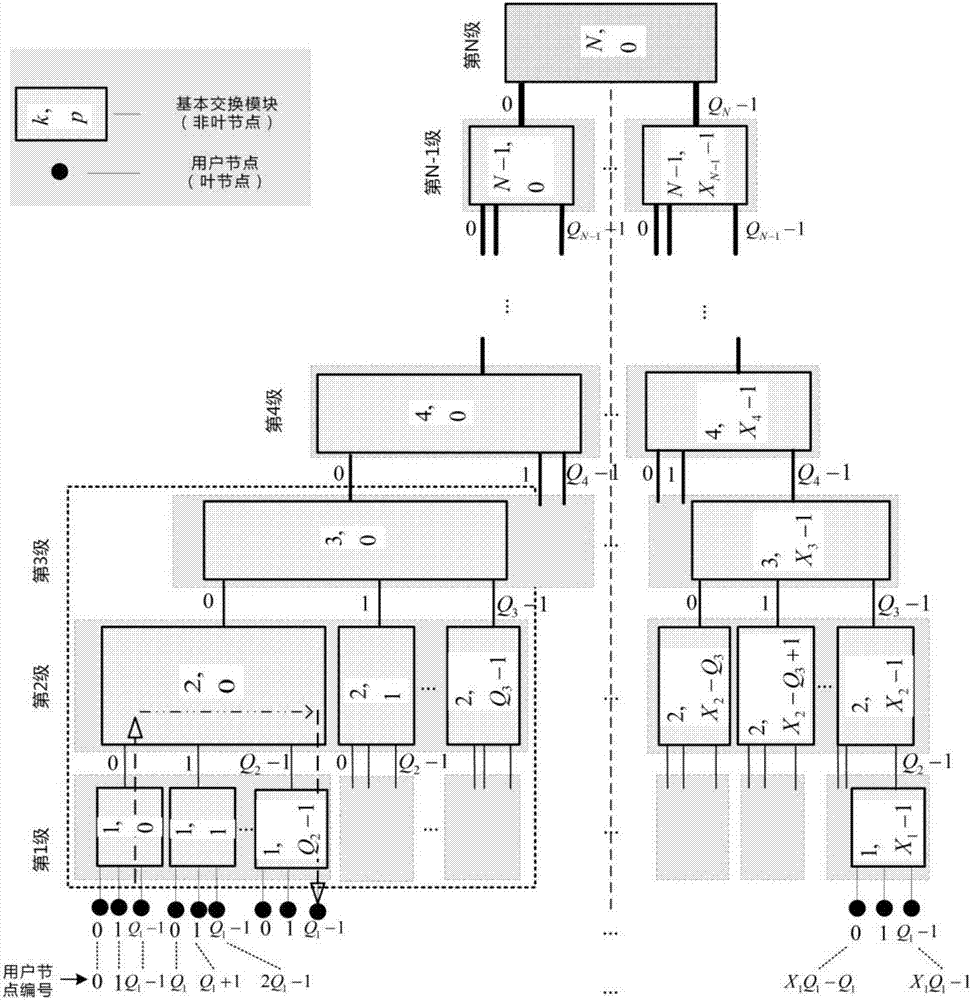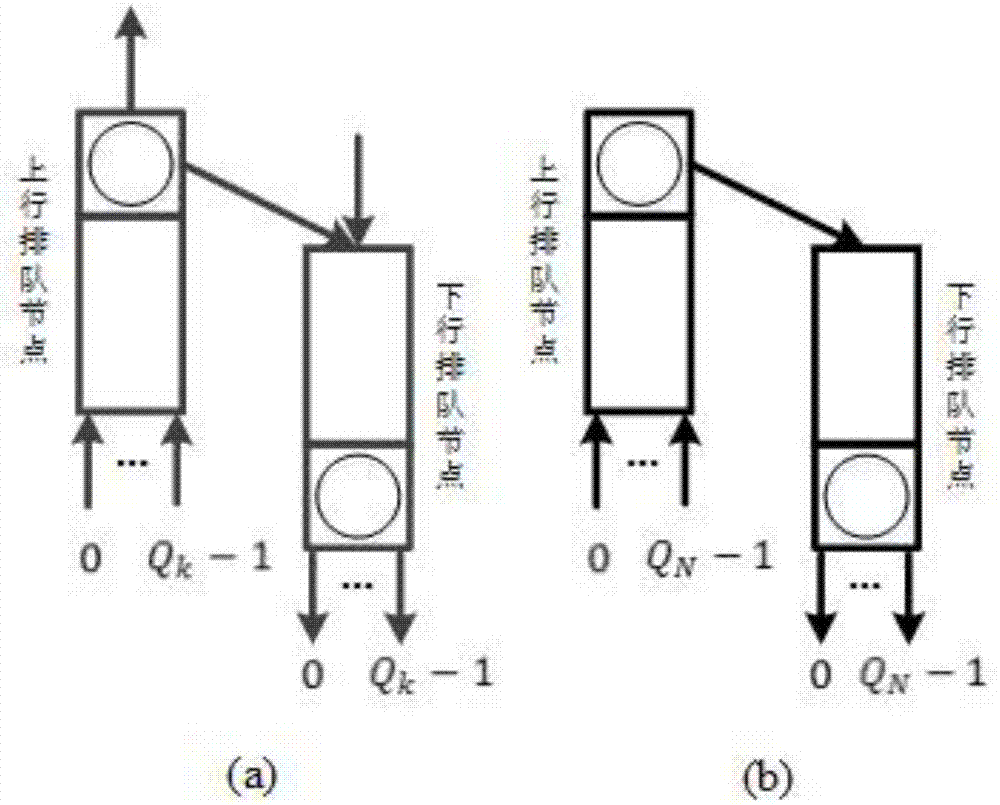Optimization method for tree network topology structure based on queuing theory
A technology of tree-shaped network and topology structure, applied in the field of communication, can solve the problems of not reflecting, not considering the influence of network parameters such as cache, network performance, and incapable of actual network performance, so as to achieve the effect of accurate performance
- Summary
- Abstract
- Description
- Claims
- Application Information
AI Technical Summary
Problems solved by technology
Method used
Image
Examples
Embodiment 1
[0090] Embodiment 1: given the tree-shaped network topology and service intensity including the number of user nodes and the number of downlink ports of the basic switching modules at all levels, when the total cache of the tree-shaped network topology takes different values, calculate the different buffer allocation schemes respectively According to the performance simulation value of the tree-shaped network topology structure, the optimal tree-shaped network topology structure is selected according to the obtained performance simulation value and combined with business requirements;
[0091] There are two buffer allocation schemes for the basic switching modules at all levels in the tree network topology: one is the allocation scheme in which the cache size of the basic switching modules at all levels in the network is proportional to the size of the traffic passing through it, that is, C k =Q k ·C k-1 ,k=2,...,N, where C k Indicates the cache size of a single switching mo...
Embodiment 2
[0094] Embodiment 2: given the tree-shaped network topology and cache allocation scheme including the number of user nodes and the number of downlink ports of the basic switching modules at all levels, under different service intensities, calculate the different tree-shaped network topologies of the basic switching modules cache respectively The performance simulation value of the structure, according to the obtained performance simulation value, combined with business requirements, select the optimal tree network topology. Its routing algorithm adopts the shortest path deterministic routing algorithm;
[0095] Such as Figure 8 As shown, the number of user ports is 4096, and the topology is Q 1 =32,Q 2 =16,Q 3 =8, the cache size of the basic switching modules at all levels is proportional to the traffic, and the cache size of the first-level basic switching module is C 1 The performance of different tree-shaped network topologies varies with the service intensity. From th...
Embodiment 3
[0096] Example 3: Given the number of user nodes and the cache allocation scheme, under different service intensities, the performance simulation values of different tree network topology structures are calculated respectively, and the optimal tree is selected according to the obtained performance simulation values and combined with business requirements shaped network topology;
[0097] Such as Figure 9 As shown, the performance of all feasible topological structures of the tree network when the number of user nodes is 4096 varies with the service intensity under different cache allocations. All feasible topological structures are shown in Table 1; from the graph analysis, the network Performance changes with business intensity and Figure 8 Consistent, the service intensity does not affect the performance between different topologies, but only affects the performance gap between different network topologies, which is consistent with the impact of service intensity on t...
PUM
 Login to View More
Login to View More Abstract
Description
Claims
Application Information
 Login to View More
Login to View More - R&D
- Intellectual Property
- Life Sciences
- Materials
- Tech Scout
- Unparalleled Data Quality
- Higher Quality Content
- 60% Fewer Hallucinations
Browse by: Latest US Patents, China's latest patents, Technical Efficacy Thesaurus, Application Domain, Technology Topic, Popular Technical Reports.
© 2025 PatSnap. All rights reserved.Legal|Privacy policy|Modern Slavery Act Transparency Statement|Sitemap|About US| Contact US: help@patsnap.com



